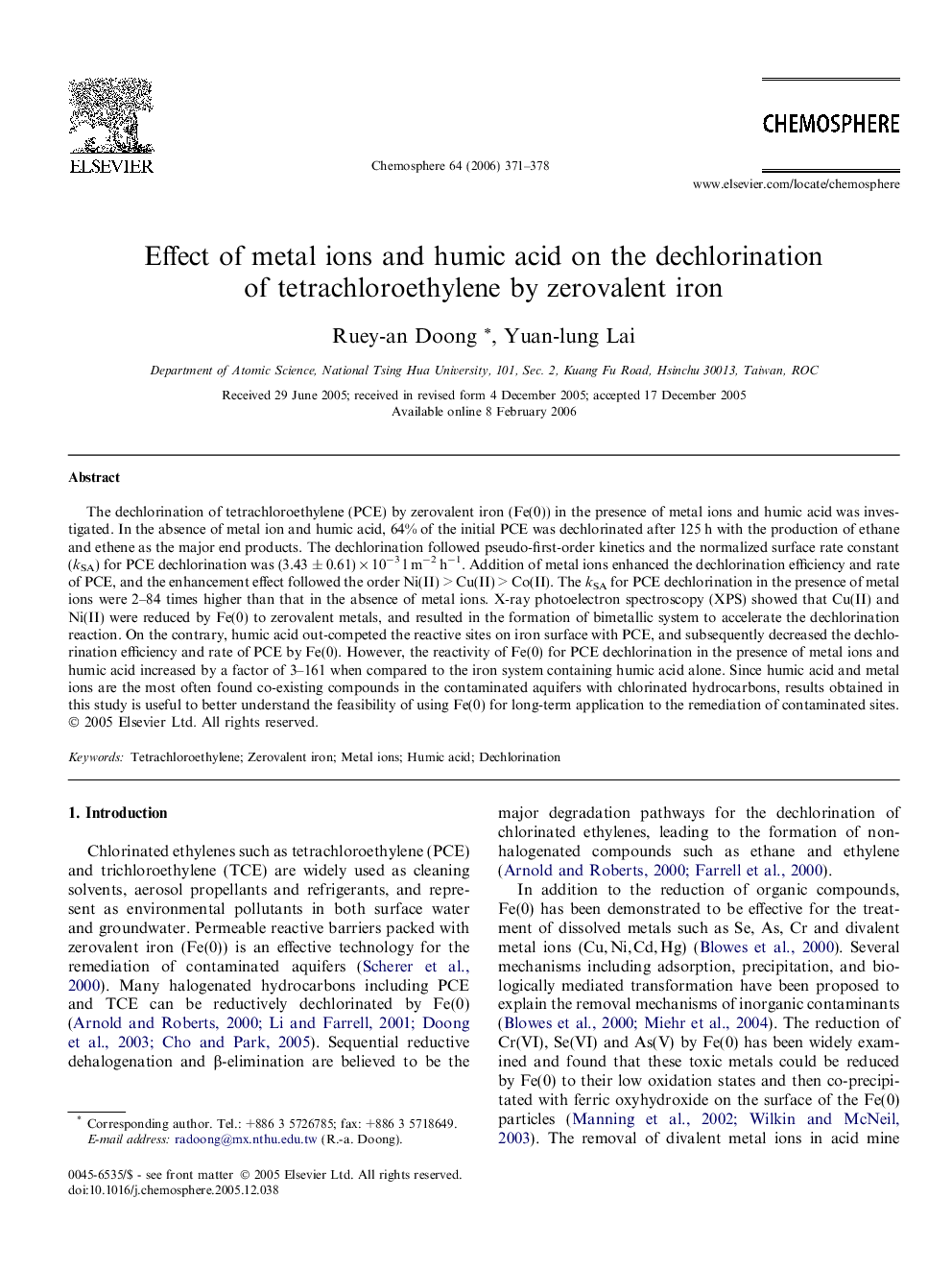| Article ID | Journal | Published Year | Pages | File Type |
|---|---|---|---|---|
| 4416352 | Chemosphere | 2006 | 8 Pages |
The dechlorination of tetrachloroethylene (PCE) by zerovalent iron (Fe(0)) in the presence of metal ions and humic acid was investigated. In the absence of metal ion and humic acid, 64% of the initial PCE was dechlorinated after 125 h with the production of ethane and ethene as the major end products. The dechlorination followed pseudo-first-order kinetics and the normalized surface rate constant (kSA) for PCE dechlorination was (3.43 ± 0.61) × 10−3 l m−2 h−1. Addition of metal ions enhanced the dechlorination efficiency and rate of PCE, and the enhancement effect followed the order Ni(II) > Cu(II) > Co(II). The kSA for PCE dechlorination in the presence of metal ions were 2–84 times higher than that in the absence of metal ions. X-ray photoelectron spectroscopy (XPS) showed that Cu(II) and Ni(II) were reduced by Fe(0) to zerovalent metals, and resulted in the formation of bimetallic system to accelerate the dechlorination reaction. On the contrary, humic acid out-competed the reactive sites on iron surface with PCE, and subsequently decreased the dechlorination efficiency and rate of PCE by Fe(0). However, the reactivity of Fe(0) for PCE dechlorination in the presence of metal ions and humic acid increased by a factor of 3–161 when compared to the iron system containing humic acid alone. Since humic acid and metal ions are the most often found co-existing compounds in the contaminated aquifers with chlorinated hydrocarbons, results obtained in this study is useful to better understand the feasibility of using Fe(0) for long-term application to the remediation of contaminated sites.
